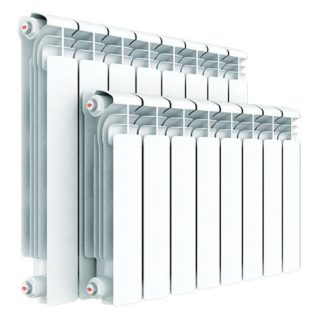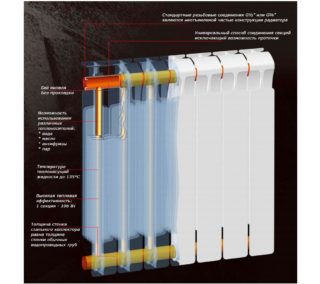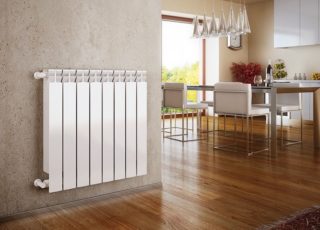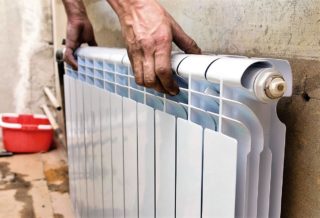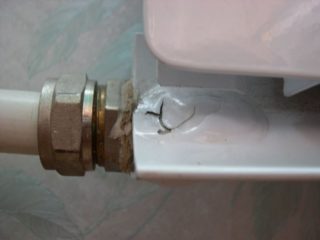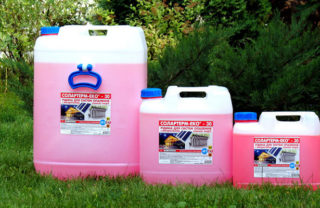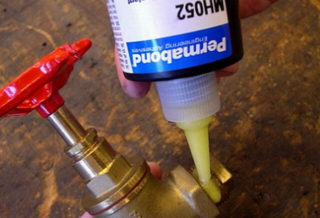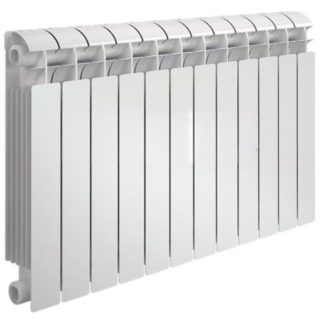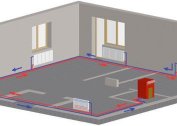After a long operating period, any heater becomes unusable and requires replacement. Often, owners of apartments and private houses choose between an aluminum or bimetal radiator. To decide, you should learn about the pros and cons of each product and compare their characteristics.
Comparative characteristics of aluminum and bimetal
Since cast-iron batteries are outdated physically and mentally, they are being replaced with more modern models. To find out which radiators are better - aluminum or bimetallic, you need to understand their structure, indicators of heat transfer, resistance to water hammer and pressure drops, durability, cost.
Aluminum radiators
An aluminum radiator is a few connected sections having protrusions and ribs that increase surface area and increase heat transfer. Such batteries may be:
- cast - with sections of the whole type;
- extruded - sections are connected mechanically;
- combined - combine both types.
Sectional batteries are made from sections that are manufactured by injection molding. They are interconnected by nipples - threaded connecting elements. These radiators can be expanded and replaced in them damaged sections. But they are less reliable due to connections.
Solid radiators consist of extruded profiles welded together. The design is non-separable, which eliminates the possibility of building during operation. Aluminum retains ductility, since there are no additives in it, which excludes cracking and chipping of the ribs during external mechanical stresses and internal water hammer. Batteries are strong and reliable, as they lack intersectional gaskets. If, on the inside, they are coated with polymer, then their service life may be higher than cast iron.
Bimetal batteries
These products, unlike the previous ones, have a steel inner element. Depending on the design, radiators are:
- full or reinforced bimetal - a solid steel core does not come in contact with external aluminum;
- with a partially steel core - steel tubes are only in vertical channels.
Compared to aluminum radiators, bimetal has a lower heat transfer by 15 -17%. The price is much higher.
Pros and cons of aluminum radiators
Aluminum models have many advantages:
- a light weight;
- high thermal conductivity - they give half the heat by convection, the rest emit;
- elegant appearance;
- affordable price;
- working pressure 12-16 atm., pressure testing - 18 atm .;
- a cross-section of collector tubes of a large area.
In addition, with the help of thermal heads, the batteries are easy to regulate, since they have a small amount of water.
The disadvantages include the following points:
- potential corrosion at pH above 7;
- an air vent valve is required to remove air;
- threaded connection is considered the most vulnerable.
Aluminum is an active metal. In case of integrity violation, the oxide film covering it, when interacting with water, begins to decompose, releasing hydrogen. When the product is tight, pressure build-up may cause the battery to rupture.To prevent this, surfaces in contact with water are coated with polymers.
Polymers prevent clogging, reduce hydrodynamic resistance and allow the use of a coolant with a higher pH level (up to 10). If there is no polymer inner coating, shut off the tap on the inlet pipe is unacceptable.
Advantages and disadvantages of bimetal batteries
The use of a steel core makes it possible to protect aluminum from high working pressure and interaction with the coolant, which eliminates its corrosion. Product advantages are as follows:
- high strength - a pressure of 100 atm can destroy them;
- durability;
- high level of heat transfer;
- modern design.
The only drawback is the highest price among all batteries.
Which batteries are better to choose
Radiators should be purchased depending on operating conditions. In a multi-storey building with central heating:
- water hammer due to sudden pressure drops;
- the quality of the coolant is low;
- water temperature changes due to seasonality and weather.
Aluminum will not withstand such loads, therefore, in high-rise buildings (over 16 floors), bimetal radiators with a stainless steel core should be installed. Weighing all the advantages and disadvantages of different models, we can conclude that for ordinary "Khrushchev" or 9-storey mixed types of products with 2 vertical channels and pressure testing up to 27 atm are suitable.
In the private sector, operating conditions are different. Quality boilers can provide pressure up to 10 atm. At the same time, water quality and temperature are under control, and water hammer and subsidence are excluded. Therefore, cheaper aluminum radiators are quite appropriate here. They have an attractive appearance, high heat dissipation, and molten batteries have a long service life. If funds permit, in a private house or cottage, you can install bimetal radiators.
Antifreeze in an autonomous heating system
To extend the life of aluminum batteries, antifreeze can be used. If the water in the batteries can freeze and tear them apart, then special liquids retain fluidity even at a temperature of minus 60 degrees. They do not harm aluminum, but they heat up slightly longer than water and have a high level of thermal conductivity.
Negative properties:
- viscosity - a sufficiently powerful boiler is needed to advance them in the heating system;
- toxicity - it is necessary to observe precautions when using;
- unacceptable violation of the integrity of the elements of the joints of the heat pipe.
With autonomous heating in aluminum radiators, antifreeze is preferable to water, since it increases their service life. The durability of the coolant is 10 years, during which the metal does not change at all.
Types of Antifreeze
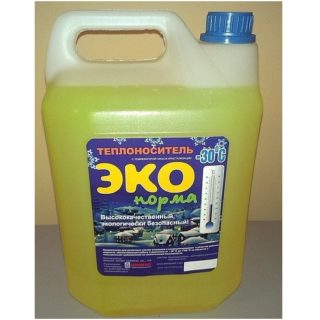
Heat carriers consist of distilled water and a certain additive:
- Antifreeze with ethylene glycol. Cheap, if accidentally ingested, it is extremely toxic. Long term of operation. Permissible use in a single-circuit boiler due to its high toxicity.
- Glycerol. The supplement is highly soluble, non-toxic, and does not precipitate.
- Propylene glycol. The best supplement is non-toxic, does not create sediment, but is expensive.
When using antifreeze for heating, batteries with a large number of sections will be required, since its heat capacity is lower than that of water. When heated, it expands greatly, so the capacity of the radiator should be more than 50%. Rubber is used as gaskets in the network, and sealant is used for all joints and joints.
Features of the installation of radiators
When installing batteries in a private house or cottage, the following rules and regulations should be observed:
- radiator length - 55-75% of the width of the window opening;
- distance to the wall - 30-50 mm, to the floor - from 100 mm, from the windowsill - from 50 mm;
- batteries should be mounted under the window, not far from the door - in places with the highest airflow;
- the central axis of the radiator coincides with the central axis of the window, the recommended deviation is 20 mm.
If the wall is covered with a foil screen with a heat-reflecting effect, the permissible distance to the radiator can be reduced to 25 mm. At the same time, heat is saved by 15%.
When installing bimetallic or aluminum radiators, they are not removed from packaging until work is completed to avoid accidental damage. With natural circulation of fluid in the batteries, it is permissible to mount up to 12 sections, with artificial - up to 24. In addition to radiators, you will need:
- sealant;
- sealing tape;
- torque wrench;
- temperature regulators and shutoff valves;
- fasteners (brackets);
- drives of different sizes.
Thermostats, shutoff valves and a Mayevsky tap are installed on the batteries, through which air is let down. Brackets are mounted on the walls in level, radiators are hung on them. They should hold tight, not swing. Then, the plugs are unscrewed, with a single-pipe system, a bypass with a valve is mounted, with a two-pipe system, a bypass with a valve is mounted. Using a torque wrench, connect the pipes to the flanges so as not to overdo it when tightening the nuts (the torque limit is indicated in the fastener instructions). Weak connection is fraught with leaks. Joints are sealed with sealant or sealant.
After installing the heating system, it is necessary to pressure test it, for which they call the plumbing. In the end, they do a test run and eliminate the imperfections, if necessary.
Connection Methods
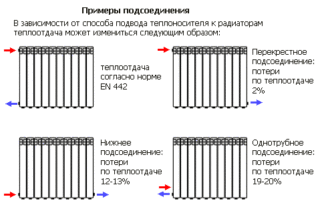 According to SNiP, radiators can be connected laterally, bottom or diagonally. The most common is the side connection, in which the inlet and outlet pipes are located on one side of the battery. With a lower connection, the input is connected to the lower fitting on one side, and the output to the lower fitting on the other side. In this case, heat transfer is reduced by 10-15%. The most advantageous is the diagonal connection, when the input is connected to the upper fitting on one side, the output to the lower fitting on the other side.
According to SNiP, radiators can be connected laterally, bottom or diagonally. The most common is the side connection, in which the inlet and outlet pipes are located on one side of the battery. With a lower connection, the input is connected to the lower fitting on one side, and the output to the lower fitting on the other side. In this case, heat transfer is reduced by 10-15%. The most advantageous is the diagonal connection, when the input is connected to the upper fitting on one side, the output to the lower fitting on the other side.
You can connect in series and in parallel. The first method involves a closed system in which the lead-in pipe of one battery is the lead-out for another. If there are no bypasses to repair one battery, you must turn off the entire system. Bypass - a tube connecting the input and output of each battery. In parallel, each radiator is connected to the main pipe.
Manufacturers and models of aluminum and bimetal radiators
The most famous brand of batteries is Global, the best Russian manufacturer is Rifar; Royal Thermo - the best prices; Sira has performance and quality; at Termal - the ratio of characteristics and cost. The last representative of the segment produces inexpensive aluminum batteries, for example, RAP-500. They are most suitable for installation in a cottage or a private house, since their return is 252 W and can withstand a pressure of 60 bar. At the same time, the price remains at an average level.
Until recently, Sira was one of the best companies, but after moving production facilities to China, its rating dropped significantly. For models of aluminum radiators - SIRA Emilia 500 and bimetallic SIRA RS BIMETAL 500 heat transfer reaches 200 watts.
Royal Thermo - a Russian manufacturer of batteries with an Italian design holds a high position in sales and level of trust. The main product range is represented by bimetallic (ROYAL THERMO BiLiner 500) and aluminum (ROYAL THERMO REVOLUTION 500) radiators with heat transfer of 170 and 180, respectively.
Rifar is a domestic company in the heating equipment market since 2002. At a low cost of batteries, bimetallic (RIFAR MONOLIT 500) and aluminum (RIFAR ALUM 500) radiators have good performance. They have a heat transfer of 180-185 W, high temperatures of the coolant and the pressure.
The global brand Global in its models combines European quality and Italian design. It produces the best aluminum and bimetallic batteries since 1971, it occupies 38% of the world market. Global is the only European company that has not moved production to China.
